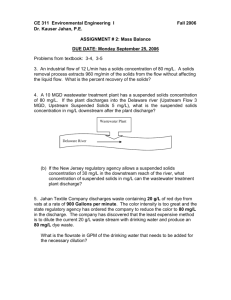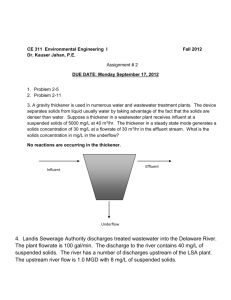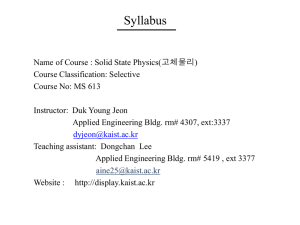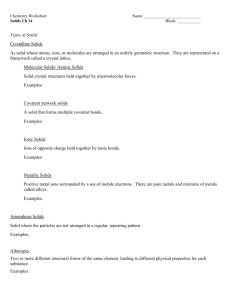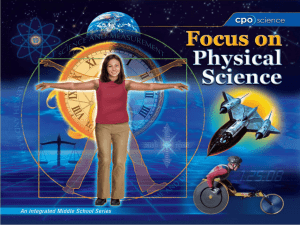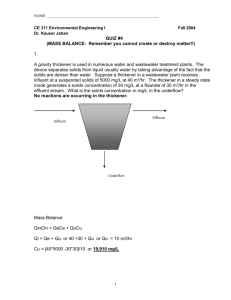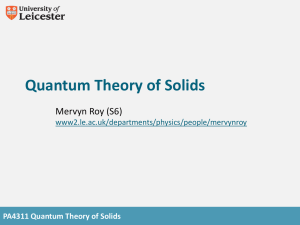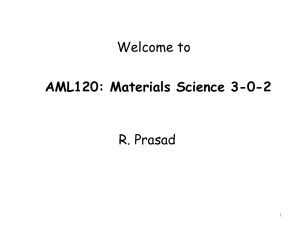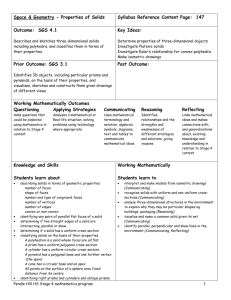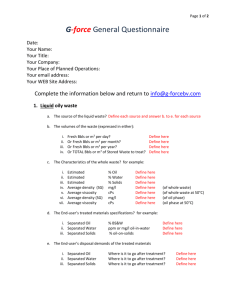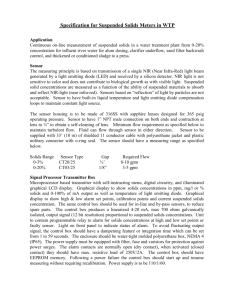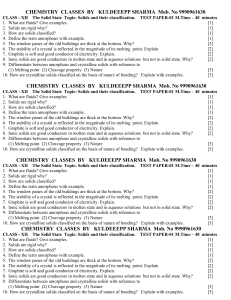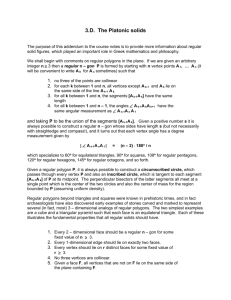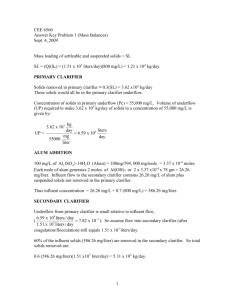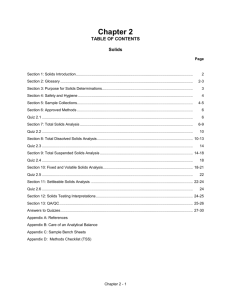Structure and Properties MAT 509
advertisement
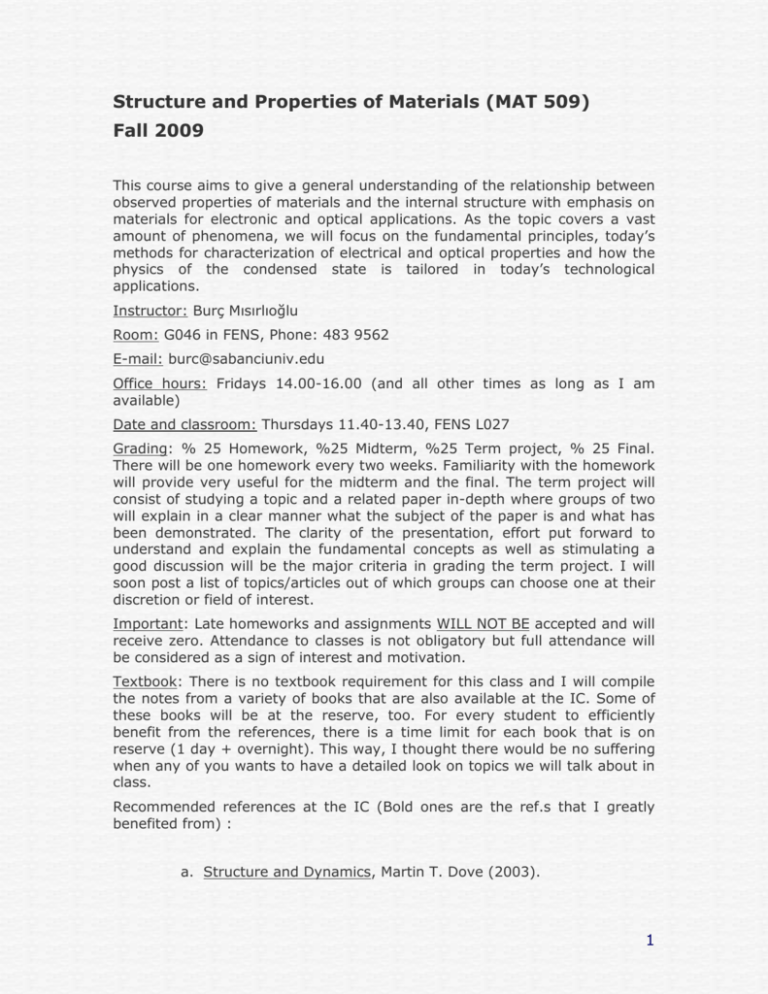
Structure and Properties of Materials (MAT 509) Fall 2009 This course aims to give a general understanding of the relationship between observed properties of materials and the internal structure with emphasis on materials for electronic and optical applications. As the topic covers a vast amount of phenomena, we will focus on the fundamental principles, today’s methods for characterization of electrical and optical properties and how the physics of the condensed state is tailored in today’s technological applications. Instructor: Burç Mısırlıoğlu Room: G046 in FENS, Phone: 483 9562 E-mail: burc@sabanciuniv.edu Office hours: Fridays 14.00-16.00 (and all other times as long as I am available) Date and classroom: Thursdays 11.40-13.40, FENS L027 Grading: % 25 Homework, %25 Midterm, %25 Term project, % 25 Final. There will be one homework every two weeks. Familiarity with the homework will provide very useful for the midterm and the final. The term project will consist of studying a topic and a related paper in-depth where groups of two will explain in a clear manner what the subject of the paper is and what has been demonstrated. The clarity of the presentation, effort put forward to understand and explain the fundamental concepts as well as stimulating a good discussion will be the major criteria in grading the term project. I will soon post a list of topics/articles out of which groups can choose one at their discretion or field of interest. Important: Late homeworks and assignments WILL NOT BE accepted and will receive zero. Attendance to classes is not obligatory but full attendance will be considered as a sign of interest and motivation. Textbook: There is no textbook requirement for this class and I will compile the notes from a variety of books that are also available at the IC. Some of these books will be at the reserve, too. For every student to efficiently benefit from the references, there is a time limit for each book that is on reserve (1 day + overnight). This way, I thought there would be no suffering when any of you wants to have a detailed look on topics we will talk about in class. Recommended references at the IC (Bold ones are the ref.s that I greatly benefited from) : a. Structure and Dynamics, Martin T. Dove (2003). 1 b. Structure of Materials, Samuel M. Allen and Edwin L. Thomas (1999). c. Elementary Solid State Physics, M. Ali Omar (1975). d. The Principles of Engineering Materials, C.S. Barrett, W.D. Nix, and A.S. Tetelman (1974). e. Electronic Properties of Materials, 3rd Edition, Rolf Hummel (2001). f. Electronic Properties of Engineering Materials, James D. Livingston (1999). g. Physical Ceramics, Yet-Ming Chiang, Dunbar P. Birnie III, and W. David Kingery (1997). h. Solid State Physics, Neil D. Ashcroft and N. David Mermin (1976). i. An Introduction to the Optical Spectroscopy of Inorganic Solids, J. Garcia Sole, L.E. Bausa and D. Jaque (2005). j. Introduction to Solid State Physics, 8th International addition, Charles Kittel (2005). k. Electrons in Solids – An Introductory Survey, 3rd Edition, Richard H. Bubbe (Check if it has arrived). l. Band Theory and Electronic Properties of Solids, Oxford Master Series in Condensed Matter Physics, John Singleton, (2004). m. Several websites (some providing general information while some giving quite bit of detail) when you do web engine searches with keywords such as “electronic structure, Schroedinger Equation, Bohr’s model of the hydrogen atom, band theory of solids, electron bands in crystals, Brillouin zone, reciprocal lattice, Bloch function, Bloch waves, semiconductors, dielectrics, origin of magnetism, electrons in solids, crystal structure, crystal binding, electrical conduction, optical properties, damping of photons in crystals, Einstein model of a crystal & heat capacity, superconductivity, Cooper pairs, BoseEinstein condensate” and etc.. Subjects to be covered in the course (Note that there might be some slight modifications to the content during the course of the semester) : 1. Atomic bonding 1.1. Brief overview: Structure of an atom. 1.2. Types of atomic bonds in condensed matter (solids and liquids) 1.3. Overview of impact of bonding state on commonly observed physical properties. 2. Crystal structure 2.1. Classification of structures and order in solids 2 2.2. Lattice structure and unit cells, reciprocal lattice 2.3. Order and disorder in solids 2.4. Overview on methods to characterize order in solids 3. Electrons in solids 3.1. Summary of the theory of the electron 3.2. Introduction to the quantum theory of the electron – Why there was a need to develop the quantum concept: Some interesting observations in nature. 3.3. Electrons in solids, energy bands in ordered solids, crystals. 3.4. How does the band structure determine properties of solids? 4. Electrical Conduction 4.1. Classical approach to electrical conduction (Drude model) 4.2. Quantum mechanical approach to electrical conduction 4.3. Semiconductors 4.4. Superconductors 4.5. Thermal properties, heat capacity. 5. Optical properties of condensed media 5.1. Continuum approach to explain optical properties of solids 5.2. Atomistic approach 5.3. Quantum approach 6. Magnetic solids, dielectrics and ferroelectrics 6.1. Basic approaches to explain magnetism in materials 6.2. Ferromagnetism, antiferromagnetism, diamagnetism, ferrimagnetism. 6.3. Giant magnetoresistance (GMR) and colossal magnetoresistance (CMR) 6.2. Origin of dielectric behavior 6.3. Ferroelectric phenomena 6.4. Superconductivity: An overview 7. Device applications, Measurement Techniques I am planning to organize this section of the class in a way that the students can choose topics to discuss in class in form of presentations. Investigation of papers published on preferred topics will also be a part of the discussions. Some example topics: 3 Defects in semiconductors and how they impact the device functions. Dielectric materials for the gates in MOSFETs. Data storage materials: Magnetic materials, materials for flash drives, materials for DRAM/SRAM, ferroelectrics, CD-DVD technology. LEDs. Use of well-known techniques to determine properties: TEM, XRD and STM in electronic material characterization (case studies and 1986 Nobel Prize in Physics for the invention of the STM technique). GMR and CMR effects in artificial magnetic layers (2007 Nobel Prize in Physics for the discovery of the GMR effect that enabled the harddisk technology today) Materials for battery technologies and energy storage. (case study: Batteries in hybrid cars) Impact of electronic structure on catalysis. 4


